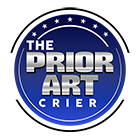A conversation on 1st Office Action patent grants got me thinking about the Accelerated Examination Program where obtaining a patent on the 1st Office Action was the hoped for outcome.
The Accelerated Examination Program commenced on August 25, 2006. PTO statistics end on May 29, 2015. A Federal Register Notice on August 16, 2016 suggest that the PTO would cancel the program due to the popularity of the Track 1 program.
The Search
Accelerated Examination required a private sector searcher to conduct a thorough patentability search. The search had to be clearly documented covering all source material and approved by the examiner. The 2015 statistics page shows 3737 granted patents and 1609 rejections. 93% were 1st Action Grants. This is a 70% grant rate. A pie chart dated April 2012 shows an 82.2% Grant rate.
These numbers suggest that the program was successful because the best prior art was seen by the examiner. One would expect a high quality patent to result from a focused effort to identify evidence.
However, I recall (but cannot now find) the PTO claiming the program produced results equivalent to what examiners produced. I suppose this refers to grant rates which are about the same. This comparison is grossly flawed. Quality of evidence was not evaluated. Because a private sector patentability search was conducted on every single AE application, one would expect the AE grant rates to be high. Why would an applicant file an application if there was prima facia invalidating evidence.
The important question for patent quality insight is this: How many AE patents have been invalidated in either an IPR or in court? Zero would be beautiful.
The Near Future
The recently proposed Patent Examination and Quality Improvement Act of 2022 is an effort to address the root-cause of low quality patents. Low quality patents are the justification for Inter Parties Review. The Bill requires the GAO to, among other things, “…rigorously evaluate previous and current initiatives and pilot programs of the Office relating to the quality of patents issued by the Office….”
This is an easy task. While the Office has implemented at least three programs directed to prior art evidence – Patent Prosecution Highway (PPH); Collaborative Search Project; and Relevant Prior Art Initiative – all three are cooperative arrangements with foreign patent offices. These programs do indeed bring additional evidence into the record. At best, these programs demonstrate the search skills of the foreign office. The United States can do better than relying on foreign patent offices.
The only program to compile data informing the effectiveness of a thorough search is the Accelerated Examination Program.
The Drawback
On the other hand, the AE program contained a counterproductive requirement. The AE Support Document.
The AE support document required the attorney to discuss the evidence submitted. Why? The AE support document appears to be nothing more than a requirement forcing the applicant and their attorney to prove patentability. A patentability search will produce no more than 20 and usually less than 15 documents. Why does the PTO think an examiner needs a lawyer to interpret the evidence, in great detail no less. The support document forces the attorney to make assertions completely unnecessary at this stage of examination. The support document does not add to quality.
It is no surprise that Track One, lacking a pre-examination search and the support document, would be preferred option over Accelerated Exam when the objective is to obtain a patent quickly. Should the Patent Examination and Quality Improvement Act of 2022 become law, we can expect the GAO to look deeply and find that pre-examination searches enhance patent quality.
Thinking Ahead
Patent applicants should have the option to strengthen their own applications by providing focused evidence. The Accelerated Examination Program did that.
